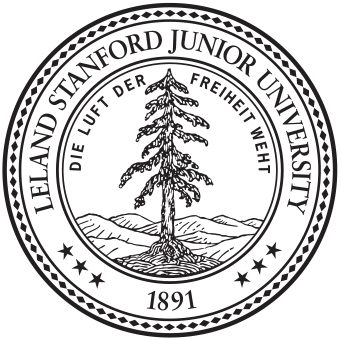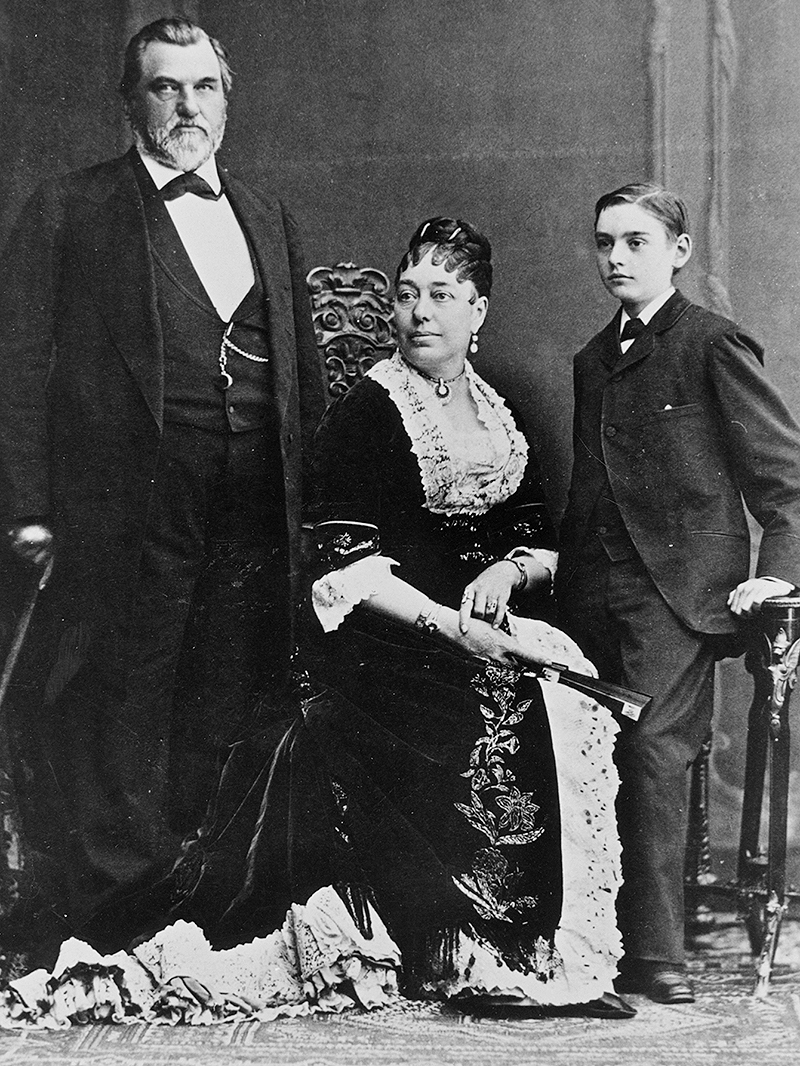About Stanford
The Founding of the University
The Leland Stanford Junior University was founded in 1885 by California Senator Leland Stanford and his wife, Jane, in memory of their only child, Leland Jr., who died of typhoid fever at 15. After his 1884 death, the Stanfords determined that they would use their wealth to do something for “other people’s” children.
They decided to create a university, one that, from the outset, was untraditional: coeducational in a time when most private universities were all-male; nondenominational when most were associated with a religious organization; and avowedly practical, producing “cultured and useful citizens” when most were concerned only with the former. The Founding Grant states the university’s objective is “to qualify its students for personal success, and direct usefulness in life” and its purpose “to promote the public welfare by exercising an influence in behalf of humanity and civilization.”
Leland Stanford devoted to the university the fortune he had earned, first by supplying provisions to the ’49ers mining for California gold and later as one of the “Big Four,” whose Central Pacific Railroad laid tracks eastward to meet the Union Pacific and complete the transcontinental railway.
Included in the Founding Grant was the Stanfords’ more than 8,000-acre Palo Alto Stock Farm for the breeding and training of trotting horses, 35 miles south of the family’s San Francisco residence. The Stanfords stipulated that none of the land of their Palo Alto farm could ever be sold. The campus still carries the nickname “the Farm.”
The Stanfords engaged landscape architect Frederick Law Olmsted to design the campus. The Stanfords’ collaboration with Olmsted and the architectural firm of Shepley, Rutan and Coolidge resulted in California Mission-inspired buildings of local sandstone with red-tiled roofs, surrounding a cloistered quadrangle with Memorial Church as its focus. The rectangular plan of the Main Quadrangle was designed to provide for expansion through a series of quadrangles developed laterally.
Stanford opened its doors on Oct. 1, 1891. Some 555 men and women students enrolled in the first year. Stanford’s first president, David Starr Jordan, said to the Pioneer Class: “It is for us as teachers and students in the university’s first year to lay the foundations of a school which may last as long as human civilization. ... It is hallowed by no traditions; it is hampered by none. Its finger posts all point forward.”

University Motto
“Die Luft der Freiheit weht” is Stanford’s unofficial motto and translates as “the wind of freedom blows.” The phrase is a quote from Ulrich von Hutten, a 16th-century humanist. Stanford’s first president, David Starr Jordan, embraced the questioning, critical spirit of von Hutten’s words and included them on his presidential seal. The motto is part of the university seal, depicted here to the left.
This page last modified Oct 26, 2015.

